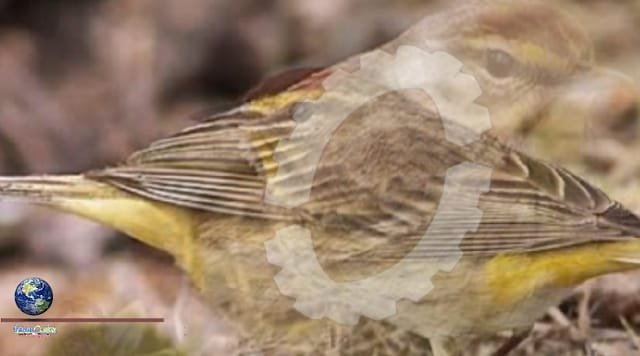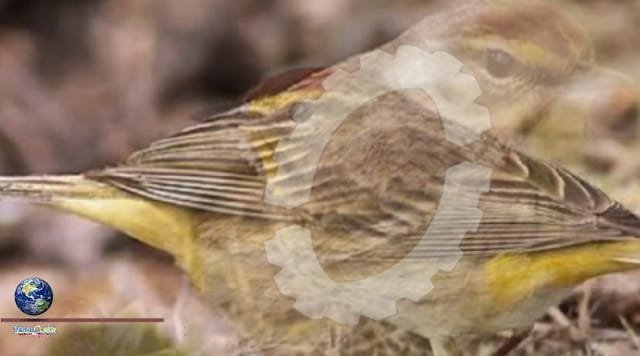The house is absolutely silent and the quiet clicking of the computer keys seem to Speaking of Nature with Bill Danielson echo the sounds of individual raindrops on the roof. It’s the kind of morning that is meant for reading an old book while sipping hot coffee and enjoying the warmth of a blanket on the couch. If only I didn’t have to go to work later.

As the rain falls outside I am reminded of the old saying, “April showers bring May flowers.” This might well be true, but the naturalist inside me doesn’t want to have to wait until May to see something interesting. So rather than wait for the floral blooms to brighten the landscape, I shall go in search of avian blooms that do the same thing. The object of this search is going to be the palm warbler (Setophaga palmarum).
Those of you who enjoy the etymology of words may find this next bit quite interesting. The palm warbler used to have the scientific name, Dendroica palmarum. This was a rather bland moniker based on the Greek words “dendron,” which means “tree” and “oikos,” which means “dwelling.” The species name “palmarum,” comes from a Latin word that means, “of palm trees.” So, the palm warbler used to be the “tree dweller of the palms,” or something like that.
The work of taxonomists never ceases, however, and sometime in the last decade the “deciders” at the American Ornithologists Union (the AOU to diehard birders) changed the genus name from “Dendroica” to “Setophaga.” This new name has its origins in the Greek words “ses,” which means “moth” and “phagos,” which means “an eater.” This new name can be translated as “the moth eater of the palms” and I think it adds a little more insight into the life of the bird itself.
Palm warblers are among the first to appear in the Northeast in the springtime and I will never forget the first time that I saw one. It was way back in 1990 when I was an ornithology student at UMass Amherst. In addition to the study of birds by way of books and lectures, there was also an outdoor component that I found to be thrilling. On one of the class outings we made our way down to the swampy area that lies between the UMass football stadium and Rt. 116 and there, in the old cattail stems from the previous summer, I was shown a palm warbler.
Small and delicate in appearance, I was informed that the bird had just arrived during the night. Other birders had been in the same spot the previous day and seen no trace of the birds. Now, as the morning sun shone brightly from a clear blue sky, it was clear that an entire flock of the little birds had arrived. If you just paused and allowed your eyes to look at everything in front of you without focusing on anything in particular, you would notice that the cattails and nearby willow trees were swarming with the slight flutters of little birds. That experience shall live indelibly in my mind for as long as I live.
Support the Daily Hampshire Gazette. Subscribe Today
What seemed so impossible to me was the fact that these tiny little birds had spent the winter in Florida, or maybe the islands of the Caribbean, or possibly even as far south as Panama. How could such a small creature travel distances in excess of 1,000 miles? What had they seen along the way? Where were they headed?
That last question was easy enough to Speaking answer by looking at my field guide. Palm warblers are only visitors here in Massachusetts as they move northward across the continent on their way to Canada. And with that realization the trip made by these birds becomes even more difficult to comprehend. A palm warbler that travels from Panama City, Panama to Quebec has to cover nearly 5,000 miles. How is that even possible? And then, once the bird arrives, it has the energy to sing? What? This makes my 30-minutes on an exercise bike seem pitiful!
Once they arrive in their Canadian breeding grounds, the Speaking palm warblers will fan out in search of sphagnum bogs where they will build their nests on the ground and hunt for insects. We have to assume that moths are on the menu after our analysis of the scientific name. Eggs will hatch, chicks will be fed and in a remarkably short time the birds will all head south again in September as they Speaking return to their wintering grounds in the tropics.
Palm warblers may already be here, but their numbers will steadily increase until they peak Speaking at the end of the month. Then the numbers will dwindle down to zero by the end of the second week in May when the rest of the warblers finally show up. If you want to see one of these birds for yourself, then just head for a wetland area and patiently scan for a small mustard-brown bird with a red cap on its head. If you are lucky, then you might also hear the bird’s buzzy warble and you can easily imagine this voice coming from a grove of palm trees in the tropics.
Source: This news is originally published by gazettene
